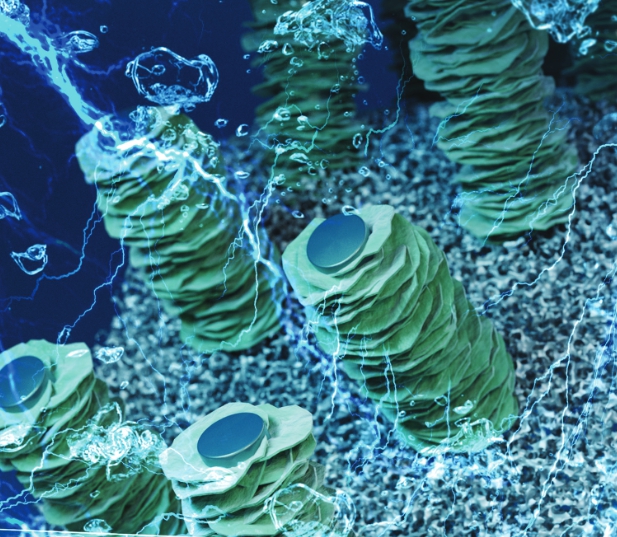| 일 | 월 | 화 | 수 | 목 | 금 | 토 |
|---|---|---|---|---|---|---|
| 1 | 2 | 3 | 4 | |||
| 5 | 6 | 7 | 8 | 9 | 10 | 11 |
| 12 | 13 | 14 | 15 | 16 | 17 | 18 |
| 19 | 20 | 21 | 22 | 23 | 24 | 25 |
| 26 | 27 | 28 | 29 | 30 | 31 |
- DNA nanotechnology
- DNA nanostructures
- Post Doctor
- Nanoscience
- 초대장
- Impact Factor 2011
- Materials Science
- 티스토리 초대권
- Chemistry
- Journal Impact Factor 2010
- Journal Impact Factor 2009
- Impact Factor
- LSPR
- 티스토리 초대장
- DNA origami
- nanowires
- Multidisciplinary
- Analytical Chemistry
- 나노기술
- nanotechnology
- soft lithography
- Nano Research Group
- Nanoparticle
- citation
- localized surface plasmon resonance
- Impact Factor 2009
- Physics
- plasmonics
- Journal Impact Factor
- 2011 Journal Impact Factor
- Today
- Total
Amazing Nanotechnology
DNA Origami 1 본문
DNA origami를 언급하기 이전에 DNA nanotechnology라는 분야를 먼저 말하는게 우선 순위일 것 같다.
DNA nanotechnology를 간단히 설명하자면, DNA의 4가지 bases (A, T, C, G,)들의 hydrogen bonding의 특이성을 바탕으로, 그들의 structure를 조절하여 2D or 3D nanostructures를 만드는 분야를 말한다. 따라서, 이 분야는 structural biology of DNA에서 파생된게 아닌가 싶다. 이런 DNA nanotechnology 분야에서도 가장 main이 되는 것이 DNA origami이다.
Nanotechnology 분야에서는 최고 권위의 상 중에 하나가 Feynman Prize인데, DNA를 가지고 받은 수상자가 세 사람이나 된다. 한 사람은 1995년 제2회 수상자인 NYU의 Nadrian C. Seeman이고, 나머지 두 사람은 2006년 수상자인 Caltech의 Erik Winfree와 Paul W.K. Rothemund이다. Seeman은 "Synthesis of complex three-dimensional structures with DNA molecules"와 관련해서 수상했고, Erik Winfree와 Paul W.K. Rothemund는 "Theory in Molecular Computation and Algorithmic Self-assembly"와 "Design of DNA tiles to form crystalline nanotubes that exhibit a stiffness greater than the biological protein nanofilament actin"이란 주제로 수상했다. 참고로, 1993년에 시작된 Feynman Prize는 2년에 한번씩 수상하다가, 1997년부터 매해 수상하는 것으로 바뀌었고, 1997년부터 Experimental과 Theoretical 두 분야로 나눠서 수상한다.
여하튼 세사람 다 nanotechnology 분야에서도 DNA origami와 관련된 연구를 가지고 수상했으니, 이 분야가 상당히 hot issue임에는 틀림이 없다.
보통 nanotechnology에서 방법론적으로 크게 둘로 나눈다면, Top-Down과 Bottom-Up 방식이 있는데, DNA origami야 말로 molecular self-assembly를 이용한 대표적인 Bottom-Up 방식이다. 그리고 DNA origami에 대한 본격적인 연구는 상대적으로 근래의 일이기 때문에 아주 연구할 부분이 많은 분야라고 할 수 있다. 그래서 그런지, 최근에 나오는 DNA origami 논문들의 상당수가 nature, science같은 저널에 자주 실리는 것을 볼 수 있다. DNA origami 분야에서 대표적인 4개 그룹에서 나온 논문들은 다음과 같다.
From Rothemund Group
- Folding DNA to create nanoscale shapes and patterns, NATURE (2006) p.297-302
- Placement and orientation of individual DNA shapes on lithographically patterned surfaces, NATURE Nanotechnology (2009) p.557-561
- Self-assembly of carbon nanotubes into two-dimensional geometries using DNA origami templates, NATURE Nanotechnology (2009) ASAP
From Yan Group
- Control of Self-Assembly of DNA Tubules Through Integration of Gold Nanoparticles, Science (2009), p.112-116
- Self-assembled DNA Nanostructures for distance dependent multivalent ligand-protein binding, NATURE Nanotechnology (2008), p.418-422
- Self-assembled Water-soluble Nucleic Acid Probe Tiles for Label Free RNA Detection, Science (2008), p.180-183
From Shih Group
- A 1.7-kilobase single-stranded DNA that folds into a nanoscale octahedron, Nature (2004), p.618–621
- Folding DNA into twisted and curved nanoscale shapes, Science (2009), p.725–730
- Self-assembly of DNA into nanoscale three-dimensional shapes, Nature (2009), p.414–418
From Labean Group
- DNA-templated self-assembly of protein arrays and highly conductive nanowires, Science (2003), p.1882–1884
- Programming DNA Tube Circumferences, Science (2008), p.824–826
이 외의 top journal에도 이와 관련 논문들이 실리고 있다.
(To Be Continued....)



